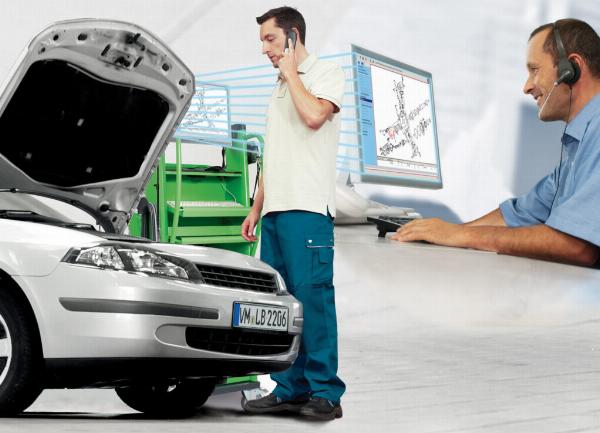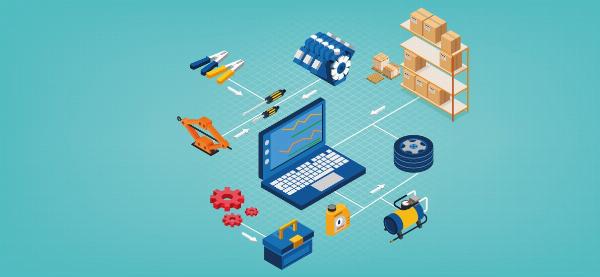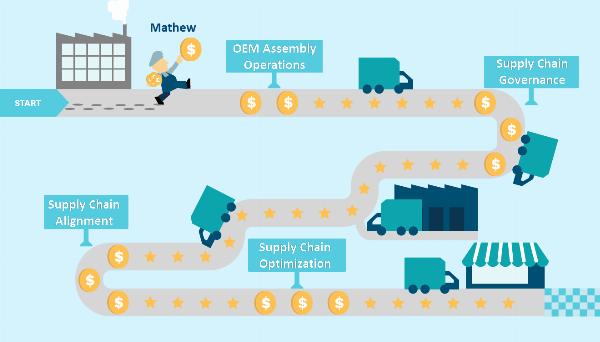 AI Blog Generation – Mass Content at Lightning Speed!
AI Blog Generation – Mass Content at Lightning Speed!
Common Challenges in Repair Estimation and How to Avoid Them
Written by Robert Wilson » Updated on: June 17th, 2025

A regular customer would like to use your repair services. Your team conducts an inspection to diagnose the issue, after which you are expected to give an estimate to the customer. Estimating the right cost of repair is an ongoing challenge in the aftermarket. Quoting a higher price can result in the job being declined by the customer, and quoting a lower price will affect your profit margins.
Getting the amount right every time is essential to building the customer’s trust and ensuring they return for your services in the future. Through this blog, we will discuss the challenges of traditional methods of repair estimation and how to tackle them for maximum customer retention.
Challenges Faced by Dealerships in Repair Estimation
1. Outdated Information
2. Inaccurate & Time Taking Revisions
3. Inconsistent Estimates
4. Lack of Predictive Insights
1. Outdated Information
Traditional methods of estimation are prone to inaccurate information due to constantly changing models, frequent updates in parts, and changing labor costs. Traditional methods of estimation most often rely on outdated information that leads to inaccuracy and potential loss. When dealers fail to produce an accurate estimate, delays, and higher repair costs are expected to take place. This can affect the reputation of the dealership and the customer’s loyalty.
2. Inaccurate & Time Taking Revisions
Drawing estimates through traditional methods is time-consuming and often consists of multiple revisions. It also includes third-party approvals that might significantly affect the anticipated downtime. Inaccurate estimates can frustrate the customer as well as bring in unexpected expenses. However, a frustrated customer and delay in service are not the only problems faced due to inaccuracy. Spending more time on one job due to wrong estimation means that technicians are busy completing one service while other repair services go on hold.
3. Inconsistent Estimates
In the absence of a standard procedure to draw estimates, it is likely to not be constant by the end of the service. This can be confusing and frustrating for the technicians as well as the customer. The reason for inconsistency is due to the changing prices of parts in the market and the difference in labor costs for experienced technicians. Customers tend to lose trust in the dealership in case the estimated price and the actual price have a large gap. Since traditional methods of estimation lack transparency, this is bound to happen.
4. Lack of Predictive Insight
Traditional methods of estimation and time forecasting do not include predictive insights. This can affect the dealership’s competence or relevance in the market. Early signs of complex problems cannot be detected without historical data and predictive data analytics, which often leads to major problems going undetected.
Dealerships might have to face instances when the customer faces another issue soon after the first repair. In this case, lack of knowledge might affect the trust of the customer towards the dealership and reduce the chances of them returning to them in the future.
Now that you understand the standard challenges faced by dealerships with traditional methods of estimation. Let us understand how the aftermarket has evolved today to bridge this gap and make the process of estimation more streamlined and accurate.
Why OEMs and Dealers Prefer Repair Estimate Software?
To tackle the ongoing issue of inaccurate estimation in the aftermarket, several estimation software are adopted by OEMs and dealers. This repair estimate software not only helps in accurately estimating the price and time but also has several other features that are discussed below:
1. Always Up-To-Date
2. Better Efficiency
3. Predictive AI
4. Standard and Consistent
5. Visual Part Identification
1. Always Up-To-Date
Repair estimation software is smart and easy to use as it effortlessly integrates real-time prices of parts, labor charges, revisions in existing parts, model updates, VIN information, etc. with respect to the market. This updated information helps in accurate estimate prediction and minimizes the chances of error. Real-time updated data helps dealers and OEMs in timely decision-making and boosting efficiency.
2. Better Efficiency
Up-to-date information can speed up the process of repair estimation along with other major decision-making. Accurate real-time data of the parts, models, and recent labor charges can significantly bring the number closer to the estimate. With more accurate predictions and a streamlined process, dealerships can manage more projects in the same amount of time. This serves the end goal of dealerships by increasing their profit and service capacity.
3. Predictive AI
Repair estimate software can analyze large amounts of historical data and identify patterns that could lead to problems in the future. With this information, dealerships can make more informed decisions that are more accurate and reduce errors. Accurate AI predictions have successfully helped dealerships build the trust of the customer and avoid dangerous mishaps. AI-driven analyses of a machine are more accurate and provide the customer with the required transparency that is usually missing in the traditional form of repair estimate.
4. Standard and Consistent
Transparency and consistency in repair help in building the trust of the customer. This helps the customers to expect what is coming and reduces any potential disputes that could occur due to wrong estimates or predictions. With the support of standardized processes and accurate estimation, both dealerships as well as customers can have a smoother experience. Thus leading to faster turnaround time and enhanced overall experience.
5. Visual Part Identification
With the advanced parts identification process, the user can simply click on the specific area of the part, and the information or specifications of the selected part will be displayed. Manual identification can often miss out on specific details about the parts, such as model number, exact year of make, and any updates that were brought to the parts over the years.
However, This estimation software can easily identify any part quickly and ensure that manual error is minimized. Technicians can avoid miscommunication and significantly speed up the process of estimation altogether.
In Conclusion
Repair estimate software has significantly enhanced the operations of dealerships and OEMs when it comes to managing estimates. This aftermarket software has solved the gaps of inaccuracy, inconsistent estimates, outdated part information, and inaccurate identification.
And has presented a streamlined process for repair estimation. Personalized features such as AI prediction, reduced human error, and accurate real-time data have helped in fostering customer trust and boosting profit. For better growth and customer relations, dealerships and OEMs across the world are adopting aftermarket software solutions.
Note: IndiBlogHub features both user-submitted and editorial content. We do not verify third-party contributions. Read our Disclaimer and Privacy Policyfor details.
Copyright © 2019-2025 IndiBlogHub.com. All rights reserved. Hosted on DigitalOcean for fast, reliable performance.














